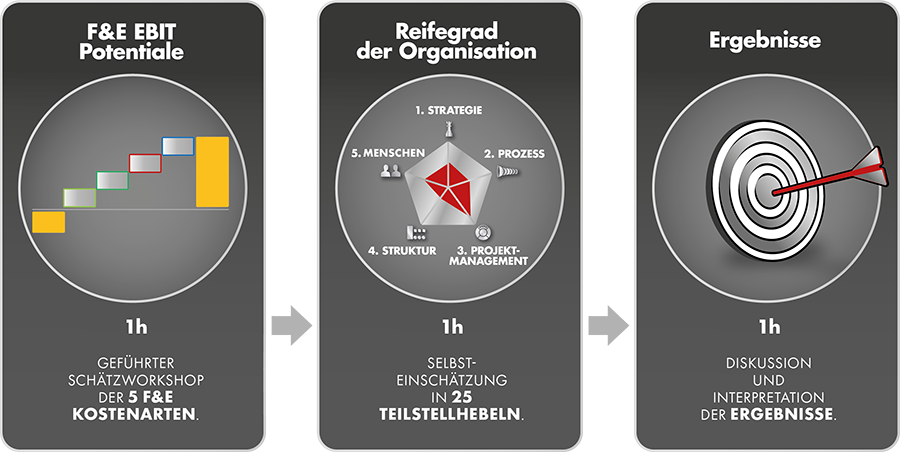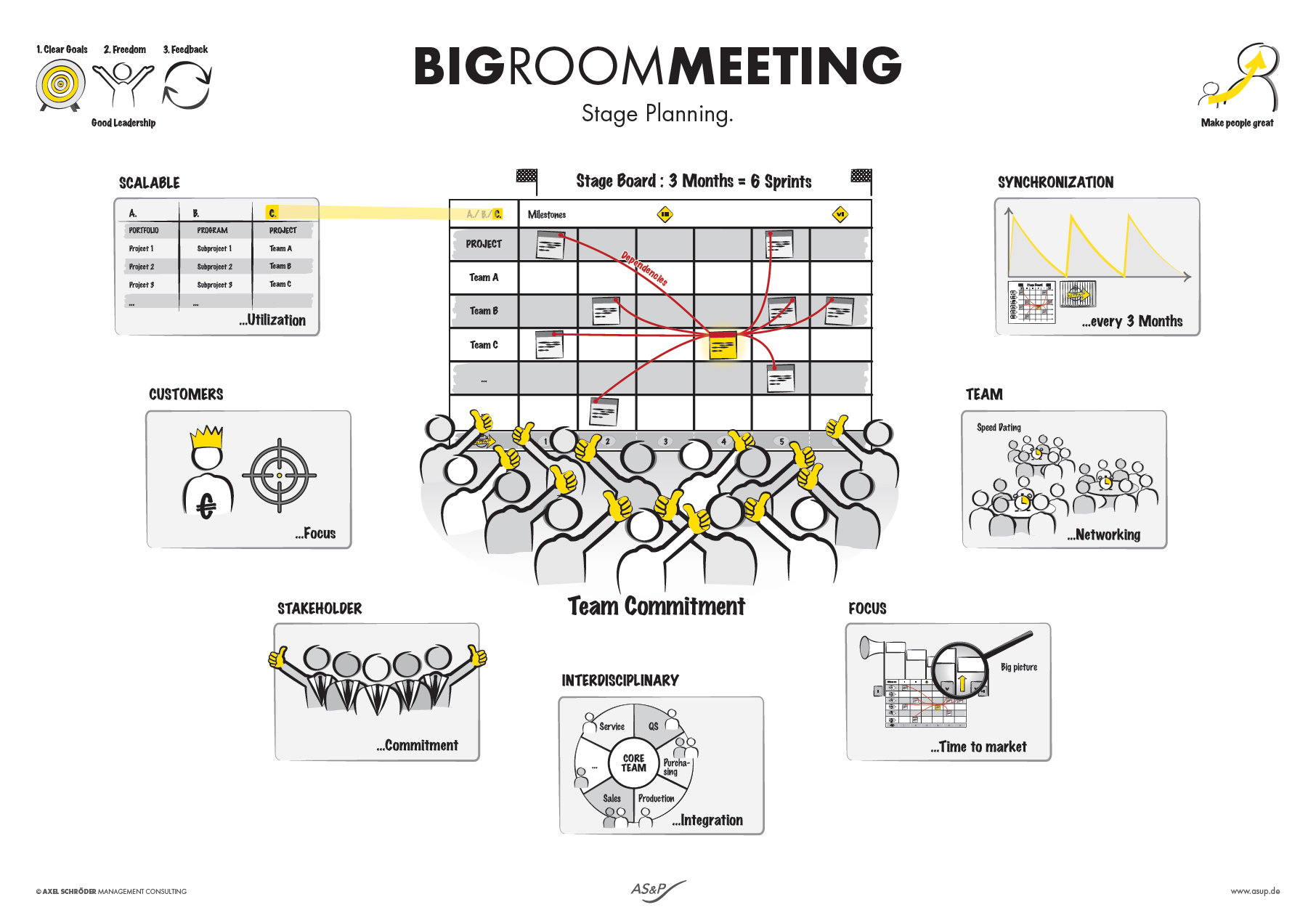1. Is it worth it?
“A Big-Room meeting? You want to plan your project with 100 people for an entire day? Do you know what that costs? If an employee costs €1,000 per day, that’s over €100,000. How do you plan to recover that cost? What’s the point of it anyway?”
“How do you estimate the potential for: 1. Reactive power, 2. Redundancy, 3. Coordination, 4. Escalation, 5. Mental setup times in our currently most important project? – we’ve calculated it in detail within the team: We came to 19.8%!
With a product development time of 2 years, we aim to come to market 2 months earlier through regular 3-month stage planning. If we take the planned monthly revenue of the product, calculate the reduced project costs, and offset the effort of the stage planning, then the investment has already paid off 100 times over after just one Big-Room meeting – any more questions?”
“Yes! How does such a Big-Room meeting work?”
BIGROOMMEETING


2. The Big Picture.
For our Big-Room meeting, we have a tight agenda. The goal is to ensure that everyone is actively involved throughout the day. It’s great if someone from management starts by conveying the project’s significance, derived from the company’s strategy. The purpose – why investing in this project pays off.
We review the vision and mission of our project. Then, we focus on the next three months: Our project leadership team has prepared a large wallpaper. It displays the next six 2-week sprints horizontally. Vertically, all involved departments from the project are listed in swim-lanes.
Then we begin: Each department fills in approximately 3 mini-milestones for the grid of the 6 sprints over the next 3 months. These mini-milestones describe completion stages for the project within their area of expertise. Each mini-milestone is concretely defined with a Definition of Done (DoD) using a second sticky note. As each department sequentially sets its milestones, the final result is the comprehensive Big Picture for the project, showing all cross-functional connections.
Such a Big-Room meeting succeeds when well-prepared and professionally moderated.
BIGROOMMEETING
3. Recognizing and resolving dependencies.
Then we discuss with all stakeholders where dependencies exist and which chronological sequences do not work – because one department expected something earlier that another department intends to deliver later. That’s exactly what it’s about. Once we have defined the no-goes, we form breakout groups. Here, departments that face challenges with chronological sequences discuss together and work out solutions in small groups.
The proposed solutions are then integrated in front of everyone on the wallpaper. Throughout the day, there are multiple transitions between the main stage and breakout group work.
In the end, this results in a corrected and realistic overall plan. It was hard work, everyone contributed. The outcome may look similar to the beginning – but appearances can be deceiving: Now, it has become a part of everyone involved.
BIGROOMMEETING


4. The Highlight: The Thumbs up.
The essential results were defined by each individual department. Dependencies in cross-functional collaboration were identified, and the no-goes resolved. What else is missing?
The highlight: Each individual is asked for their commitment. It’s the same ritual as during sprint planning: the thumbs up!
Everyone has the opportunity to veto and provide reasons for it. Even the quiet colleagues, whose expertise is valuable, should be heard. Only when no single thumb points down is the meeting concluded – and the maximum commitment achieved.
BIGROOMMEETING
5. Three Key Advantages.
1. Commitment for the next 3 months.
Everyone knows it from themselves: When you set yourself challenging goals, your motivation will be greater even when difficulties arise. The commitment is much higher than if the goals had been set by the project manager.
2. Cross-functional collaboration.
Each team member gains more understanding and insight into the work of other departments over time. Cross-functional collaboration improves – silo effects are reduced.
3. Planning capability increases.
It’s the same effect as with sprints: We humans learn through repetition. Stage planning is repeated every 3 months. We cannot prevent everyone involved from getting better at it.
As a result: We meet our deadlines!
BIGROOMMEETING

Self-Assessment Workshop

Improvement Potential

Assess STAGEPLANNING Potential.
1. Current State Analysis.
– First, we want to understand your current situation.
2. Self-Assessment-Workshop.
– In the self-assessment workshop, we will show you best practices.
3. Action Plan.
– Based on this, you assess your need for action.
4. Improvement Potential.
– We estimate the quantitative improvement potential.
5. Vision.
– Together, we define a vision.
6. Implementation Plan.
– We establish an implementation plan.
We estimate your R&D performance.
The R&D Performance Self-Assessment.
In a 3-hour workshop with the R&D leadership team, you will learn about our methodology:
Part 1: Self-assessment of R&D EBIT cost potentials.
Part 2: Maturity level of the organization across 5 levers.
Part 3: Result interpretation.
By narrowing down through scenarios, it quickly becomes clear whether an initiative is worthwhile.


